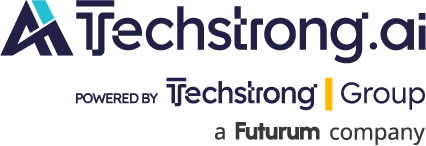
Artificial intelligence (AI) has not caused significant job losses despite widespread anxiety over a so-called “AI-pocalypse” in the labor market.
Researchers from Yale’s Budget Lab and the Brookings Institution on Wednesday said they have found no evidence of “discernible disruption” to employment since ChatGPT’s debut nearly three years ago.
The study examined shifts in worker distribution across job categories since the chatbot’s launch. Researchers found no substantial evidence that generative AI (GenAI) powering ChatGPT’s ability to create original text, images and content from user prompts has fundamentally altered employment patterns.
“Overall, our metrics indicate that the broader labor market has not experienced a discernible disruption since ChatGPT’s release 33 months ago, undercutting fears that AI automation is currently eroding the demand for cognitive labor across the economy,” researchers wrote.
The findings arrive amid growing anxiety over AI’s potential to eliminate jobs as companies pursue cost-cutting automation. Some high-profile tech executives have issued stark warnings. Anthropic CEO Dario Amodei flagged the possibility of dramatic unemployment spikes in May, while Salesforce Inc. CEO Marc Benioff declared in January that current business leaders represent the last generation managing entirely human workforces.
AI could replace approximately 6% to 7% of jobs in the United States, Goldman Sachs economists project, but the investment bank maintains an optimistic outlook on the technology’s overall impact on employment. The economists characterized potential job losses as temporary, drawing on historical precedent to support their assessment. Past technological advances that displaced workers have typically seen diminish within two years, according to their analysis.
However, only about 6% of U.S. jobs, representing 9.2 million positions, are considered truly at risk of displacement, according to a survey published Thursday by the Society for Human Resource Management (SHRM). The distinction highlights a critical point: Extensive task automation does not necessarily translate to job elimination. Still, software engineers and other professionals whose work centers on mathematics and computing face the greatest risk of job displacement from AI, SHRM found.
Yale and Brookings Institution researchers cautioned that GenAI adoption remains in its infancy, and their analysis does not forecast future impacts. They plan monthly monitoring to track potential changes.
While the broader labor force appears stable, isolated examples of AI-driven workforce reductions have emerged. Tech companies, including Dropbox Inc. and Duolingo have cited AI capabilities when announcing layoffs in recent years. A January survey indicated many global employers planned workforce reductions as AI assumes certain tasks.
Yet AI’s limitations are increasingly apparent. A recent MIT report found that 95% of companies implementing AI are not generating profits from it. The Harvard Business Review identified a phenomenon called “workslop,” in which employees use AI to produce superficial work that creates additional burdens for colleagues checking AI-generated output.
The findings come as companies across industries showcase their AI adoption strategies. This week’s National AI in Work Day prompted technology executives, software developers, supply chain managers and professional services leaders to share their approaches to implementing AI on LinkedIn.
The contrast between corporate enthusiasm for AI integration and the study’s findings suggests the technology’s workplace impact may be more gradual than initially predicted.

